Monthly Archives: January 2018
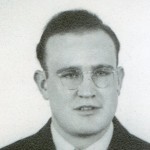
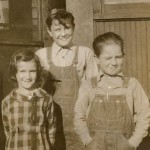 My Uncle Bill Spencer discovered genealogy by chance, when he came across a little black book that his mother, Anna Schumacher Spencer had. When he asked about it, she showed it to him. In the book was all she knew about her family’s history. I don’t know if my grandmother had an interest in the family history, but very little time to pursue it, or if it was passed down to her by someone else. Whatever the case may be, Uncle Bill was hooked on the family history from that time forward…an amazing feat for an 8 year old boy. It was a project he spent serious time on for all of his pre-dementia life. The family history and all the possible information were two things that were never far from his thoughts. His mind was obsessed with it.
My Uncle Bill Spencer discovered genealogy by chance, when he came across a little black book that his mother, Anna Schumacher Spencer had. When he asked about it, she showed it to him. In the book was all she knew about her family’s history. I don’t know if my grandmother had an interest in the family history, but very little time to pursue it, or if it was passed down to her by someone else. Whatever the case may be, Uncle Bill was hooked on the family history from that time forward…an amazing feat for an 8 year old boy. It was a project he spent serious time on for all of his pre-dementia life. The family history and all the possible information were two things that were never far from his thoughts. His mind was obsessed with it.
The Spencer Family History researched by my Uncle Bill without the benefit of modern computer data assistance, spanned some 80+ years. He worked on it because of his own curiosity, at first. He traveled to spend time in court records rooms, searching for clues. He walked countless cemeteries, looking for the graves of his ancestors. He meticulously documented every picture, every find, and every news article he came across. He talked to aunts, uncles, and family friends, and wrote down their stories. He wanted to know everything…not just names and faces, but who these people were, and what their lives were about.
At some point, Uncle Bill’s obsession became Uncle Bill’s gift. He wanted to preserve the Spencer Family History to be passed down to all of the children of his multi-great grandparents. It was his legacy. He had such great love for the past, and really enjoyed researching history and ancestry. And his plan was to get the family history out to as many family members as he could. I have been amazed at how far it has gone across the United States and probably the world. I have come across a number of people who have all or part of Uncle Bill’s history. He made copies of it for anyone who asked, or showed an interest. These were all done by hand. Although, he did use a copier in the later years. His was a work of love for the future generations, who might 
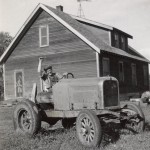 find an interest someday, even if they didn’t seem interested now. While Uncle Bill’s mission seemed very much like an obsession, it was really a gift obsession. He was obsessed about giving it away. Few people have ever worked a lifetime on a gift that would be given away to people as yet unborn and unknown. It was a gift than was priceless to the receiver. Uncle Bill had given the very best of himself and poured it into the family history, and I for one feel very blessed to receive Uncle Bill’s gift. Today is my Uncle Bill’s 96th birthday. Happy birthday Uncle Bill!! Have a great day!! We love you!!
find an interest someday, even if they didn’t seem interested now. While Uncle Bill’s mission seemed very much like an obsession, it was really a gift obsession. He was obsessed about giving it away. Few people have ever worked a lifetime on a gift that would be given away to people as yet unborn and unknown. It was a gift than was priceless to the receiver. Uncle Bill had given the very best of himself and poured it into the family history, and I for one feel very blessed to receive Uncle Bill’s gift. Today is my Uncle Bill’s 96th birthday. Happy birthday Uncle Bill!! Have a great day!! We love you!!
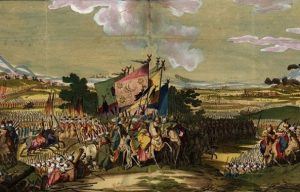 Through the years, people have been known to self destruct. Suicide is, unfortunately, not that uncommon, but this is not a story of suicide, spontaneous combustion, or accidental overdose. It is rather a story of an Army that “self destructed.” An entire army, although, some of them might have survived the “attack.” The insanity happened during the Austro-Turkish (Hapsburg-Ottoman) War, which lasted from 1787 to 1791, and occurred at almost the same time as the Russo-Turkish War was being fought, in which the Austrians were allies of Russia to fight a common foe. The Austrian (or Hapsburg Empire) Army at that time was composed of Austrians, Czechs, Germans, French, Serbs, Croats, and Polish, effectively making communication difficult, and a similar communications issue as the Tower of Babel, as possible. Most of the facts about the Austro-Turkish War were not written until 1831, when they were compiled in the Austrian Military Magazine. Another source was the German account by A. J. Gross-Hoffinger in Geschichte Josephs des Zweiten, which was itself not compiled until around 60 years later. Yet another, albeit less popular source, was the 1843 account of the war in “History of the Eighteenth Century and of the Nineteenth till the Overthrow of the French Empire, with particular reference to mental cultivation and progress.”
Through the years, people have been known to self destruct. Suicide is, unfortunately, not that uncommon, but this is not a story of suicide, spontaneous combustion, or accidental overdose. It is rather a story of an Army that “self destructed.” An entire army, although, some of them might have survived the “attack.” The insanity happened during the Austro-Turkish (Hapsburg-Ottoman) War, which lasted from 1787 to 1791, and occurred at almost the same time as the Russo-Turkish War was being fought, in which the Austrians were allies of Russia to fight a common foe. The Austrian (or Hapsburg Empire) Army at that time was composed of Austrians, Czechs, Germans, French, Serbs, Croats, and Polish, effectively making communication difficult, and a similar communications issue as the Tower of Babel, as possible. Most of the facts about the Austro-Turkish War were not written until 1831, when they were compiled in the Austrian Military Magazine. Another source was the German account by A. J. Gross-Hoffinger in Geschichte Josephs des Zweiten, which was itself not compiled until around 60 years later. Yet another, albeit less popular source, was the 1843 account of the war in “History of the Eighteenth Century and of the Nineteenth till the Overthrow of the French Empire, with particular reference to mental cultivation and progress.”
The “Battle of Karansebes,” apparently took place in the town of Karansebes, in present day Romania, on September 17th, 1788. Austria at that time was fighting with Turkey for control of the Danube River. The battle started with a number of Austrian cavalrymen soldiers on a night patrol. Looking for Turkish soldiers in the area where the Austrian Army had set up camp earlier that day, the Austrian Army night patrol chanced upon some Gypsies across the river. The Gypsies offered them Schnapps to relieve the war-weary soldiers. Seeing a chance to relax before the next day’s battle, the soldiers began drinking…their first mistake. Later, a contingent of Austrian infantry men found the cavalrymen having a party and wanted to join in. However, the cavalrymen refused them the alcohol…their second mistake, and the one that started a quarrel that turned into a fistfight. The next thing anybody knew, a shot was fired across the river. Some infantrymen in the distance shouted, “Turks, Turks,” mistaking the gunshot as coming from the enemy Ottoman Turks. Both parties, Austrian infantrymen and Austrian cavalrymen alike, fled back to the other side of the river where they camped, but by that time, chaos and disorder had taken over. Some soldiers were fleeing due to unpreparedness, while some German officers shouted, “Halt! Halt!.” Non-German soldiers not understanding the German language, and thought it meant “Allah”, referring to the Islamic Turkish making cries unto their God. This prompted the majority of the Austrian Army to start shooting at each other. Everyone commenced shooting at fellow Austrian and even shadows, thinking the enemy was upon them. Soon, an Austrian corps commander, thinking that a cavalry attack from the Turkish Army was in progress, ordered artillery fire on his own men!
The casualties were enormous, and amounted to about 10,000 Austrian soldiers dead and wounded. The Turkish Army arrived two days later, and found the town of Karansebes without defense. The Turkish Army took over the town easily soon after their arrival. Although many people attest that the battle really happened, some argue over its authenticity, due to the fact that no record of it was written until some 40 years later. Some argue that embarrassment may be the cause why no accounts of the incident were published until several decades later. Others say that the Austrian Army during that time was led by Austrian and German officers, while the infantrymen were composed of other European nation allies. In that regard, for some Austrians at least, if the battle fought was won, the victory was Austrian, but if they lost the battle, the blame was on the non-Austrian soldiers who had been forced into service.
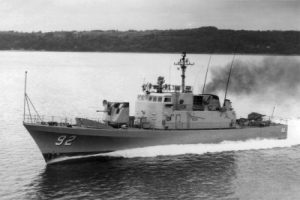 Would you want your nation to go to war over fish? Would you even consider that nations might do that? Well, enter the Cod Wars. The Cod Wars were disputes over Iceland’s territorial waters, fought in four bouts over a 25 year period: The Proto Cod War, between 1952 and 1956; the First Cod War between 1958 and 1961; the Second Cod War between 1972 and 1973; and the Third Cod War between 1975 and 1976. Iceland wanted to expand its territorial waters and exclude foreign fishing fleets. Britain would have none of that. The British distant fishing fleet fished extensively in the waters off Iceland, and supplied a lot of fish and chips shops. But Britain also wanted to prevent precedents that violated the principle of narrow territorial waters. Narrow territorial waters were key for the Royal Navy to sail freely and continue to project power across the world. The Icelanders were motivated by the prospective economic gains. An extension of its territorial waters meant greater catches, and a way to exclude competing trawler fleets and conserve important fishing grounds. The country’s heavy dependence on fishing meant that extensions had a significant impact on Iceland’s Gross Domestic Product, roughly one-quarter of which was tied to the fisheries sector, export earnings one-half to two-thirds of which were tied to the fisheries sector and employment roughly 15 percent of which was in the fisheries sector.
Would you want your nation to go to war over fish? Would you even consider that nations might do that? Well, enter the Cod Wars. The Cod Wars were disputes over Iceland’s territorial waters, fought in four bouts over a 25 year period: The Proto Cod War, between 1952 and 1956; the First Cod War between 1958 and 1961; the Second Cod War between 1972 and 1973; and the Third Cod War between 1975 and 1976. Iceland wanted to expand its territorial waters and exclude foreign fishing fleets. Britain would have none of that. The British distant fishing fleet fished extensively in the waters off Iceland, and supplied a lot of fish and chips shops. But Britain also wanted to prevent precedents that violated the principle of narrow territorial waters. Narrow territorial waters were key for the Royal Navy to sail freely and continue to project power across the world. The Icelanders were motivated by the prospective economic gains. An extension of its territorial waters meant greater catches, and a way to exclude competing trawler fleets and conserve important fishing grounds. The country’s heavy dependence on fishing meant that extensions had a significant impact on Iceland’s Gross Domestic Product, roughly one-quarter of which was tied to the fisheries sector, export earnings one-half to two-thirds of which were tied to the fisheries sector and employment roughly 15 percent of which was in the fisheries sector.
Each Cod War broke out when Iceland extended its territorial waters and the British failed to comply with the new Icelandic regulations. Clashes and confrontations started between Icelandic patrol ships and British trawlers. The harassment of British trawlers in the contested waters provoked the British to sanction the Icelanders in the Proto Cod War preventing the Icelanders from accessing their largest export market and send the Royal Navy into the contested waters during the last three Cod Wars. Neither side actively tried to cause casualties but the clashes at sea were still dangerous. I can’t imagine a war, in which the combatants try not to 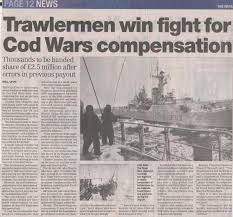 hurt each other. Nevertheless, individuals were injured, and there was one fatality on the Icelandic side. Surely bargaining would have saved both sides the inevitable costs and risks of unilateral, unrecognized expansions. Historians and political scientists have identified how domestic pressure on elites and the nature of alliance politics contributed to miscalculation on both sides that contributed to bargaining failure.
hurt each other. Nevertheless, individuals were injured, and there was one fatality on the Icelandic side. Surely bargaining would have saved both sides the inevitable costs and risks of unilateral, unrecognized expansions. Historians and political scientists have identified how domestic pressure on elites and the nature of alliance politics contributed to miscalculation on both sides that contributed to bargaining failure.
Neither government really understood the public pressure that their counterparts were under. Icelandic politicians were particularly vulnerable to domestic pressure, as opposition parties, media and public sentiment likened compromise to treason. Contradictory statements from different members of the Icelandic government, diplomats and other elites contributed to the mistaken British view that the Icelanders were divided and not fully committed to expansive and legally dubious extensions. The British trawling industry, which had a staunch ally in the Ministry of Agriculture and Fisheries, put great pressure on the British government. The Ministry favored aggressive and extreme actions in the disputes, while the Foreign Office was more conciliatory and concerned about the Cod Wars’ impact on British security interests and international standing. The Icelanders deemed it unlikely that their NATO ally and friend would sanction the Icelanders or send in the Royal Navy. Both sides also believed that the United States and other NATO allies would side with them. Even though the American position on territorial waters tended to line up with the British view, and the United States opposed Iceland’s unilateralism, the United States ultimately intervened on Iceland’s behalf. They had a stake in the outcome. The United States bought up unsold Icelandic fish, making the British sanctions toothless in the Proto Cod War. The United States pressured Britain behind the scenes in the last three Cod Wars. At stake was a strategically important United States base in Keflavík, which was needed to track Soviet submarine activity. For the United States, Iceland was an important chain in the line of defense in case of war with the Soviet Union.
Neither Iceland or Britain found the other’s threats and demands credible prior to the outbreak of conflict. However, as each Cod War intensified and Icelandic statesmen came under major domestic pressure, they found themselves forced to threaten to withdraw Iceland’s NATO membership and expel United States forces from the military base in Keflavík in desperate attempts to push the British to give in to Iceland’s demands. 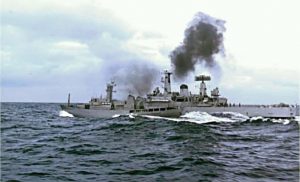 What started as minor disputes over fishing rights suddenly had implications for the Cold War. President Eisenhower…during the Proto Cod War…and Secretary of State Henry Kissinger…during the Second Cod War…talked about the Icelanders in terms of the “tyranny of the weak,” as they felt compelled to oblige their small, obstinate, strategically important ally. With NATO allies heaping pressure on the British. to settle and Icelandic politicians clearly constrained by public pressure, the British reluctantly gave in to most of the Icelanders’ demands. Iceland achieved favorable agreements in each Cod War, with the last Cod War concluding 40 years ago when the Icelanders achieved a 200-mile exclusive economic zone.
What started as minor disputes over fishing rights suddenly had implications for the Cold War. President Eisenhower…during the Proto Cod War…and Secretary of State Henry Kissinger…during the Second Cod War…talked about the Icelanders in terms of the “tyranny of the weak,” as they felt compelled to oblige their small, obstinate, strategically important ally. With NATO allies heaping pressure on the British. to settle and Icelandic politicians clearly constrained by public pressure, the British reluctantly gave in to most of the Icelanders’ demands. Iceland achieved favorable agreements in each Cod War, with the last Cod War concluding 40 years ago when the Icelanders achieved a 200-mile exclusive economic zone.
 Yesterday, my family lost another of my uncles, when my Uncle Bill Beadle went home to heaven. He has been ill for some time, but that just doesn’t help you to be ready for his home going. Nothing really prepares you for that. He went peacefully in his chair, having slept through the night and awakened in his sleep, got up to watch television. It was there that Aunt Virginia found him when she got up in the morning. Knowing that Uncle Bill went home peacefully, eases my mind a little, but when I think of the many years they have been married, and how sad she is, I am very sad indeed.
Yesterday, my family lost another of my uncles, when my Uncle Bill Beadle went home to heaven. He has been ill for some time, but that just doesn’t help you to be ready for his home going. Nothing really prepares you for that. He went peacefully in his chair, having slept through the night and awakened in his sleep, got up to watch television. It was there that Aunt Virginia found him when she got up in the morning. Knowing that Uncle Bill went home peacefully, eases my mind a little, but when I think of the many years they have been married, and how sad she is, I am very sad indeed.
My cousin, Elmer Johnson, recalled that Uncle Bill was born up around Worland, Wyoming. He worked in the pipe yards, owned his own rathole drilling business with both sons, Forrest and Steve by his side. Uncle Bill was a great machinist and general all around mechanic. He loved spending time with Steve fishing and he loved to go bird hunting up around Worland. Pheasant and Chukars were his favorites, He liked hunting them, because it was much more exciting, walking the fields with that unexpected bird flying up out of nowhere giving only seconds to make the shot. Uncle Bill always had that cantankerous spirit…in the best ways, and had a way of getting you turned around and talked into doing the right thing if you were headed off course. He enjoyed his pipe, for quite a few years, and his chew. Forrest and Elmer got into that big block of chew when they were kids, didn’t know not to swallow it… well, when they swallowed it, they turned about three shades of green. Elmer tells me that he still can’t deal with chewing tobacco!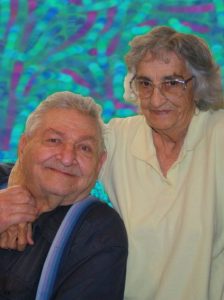
My sisters, Cheryl Masterson, Caryl Reed, Alena Stevens, Allyn Hadlock, and I were reminiscing last night about all the wonderful years since Uncle Bill joined our family. We all agreed that Uncle Bill had an incredible smile, complete with a mischievous twinkle in his eyes. He loved to tease the kids, and we all loved to be teased. Then he would laugh with his infectious laugh, and we all had a thoroughly great time. Uncle Bill was really not serious very much, at least not around us, or most of the kids. It just wasn’t a real part of his nature, unless you were heading for trouble…then he would get serious, but not in a mean way. Rather, as Elmer said, “He had a way of getting you turned around and talked into doing the right thing if you were headed off course.” And it happened before you even knew it was happening. That was Uncle Bill, and we will miss him very much. Rest in peace Uncle Bill. We love you.
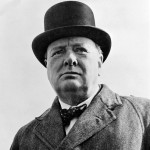 As a young battalion commander, Winston Churchill had a lot to learn about the facts of war. He was destined for greatness, and if he was to realize his destiny, he would have to learn many things. On January 17, 1916, he was battalion commander on the Western Front, when he attended a lecture on the Battle of Loos given by his friend, Colonel Tom Holland, in the Belgian town of Hazebrouck. It would be one of the first lessons, but the resulting knowledge might not be what we all would think. It was not about strategy or brave heroics, but rather of hopelessness.
As a young battalion commander, Winston Churchill had a lot to learn about the facts of war. He was destined for greatness, and if he was to realize his destiny, he would have to learn many things. On January 17, 1916, he was battalion commander on the Western Front, when he attended a lecture on the Battle of Loos given by his friend, Colonel Tom Holland, in the Belgian town of Hazebrouck. It would be one of the first lessons, but the resulting knowledge might not be what we all would think. It was not about strategy or brave heroics, but rather of hopelessness.
The Battle of Loos, which took place in September 1915, resulted in devastating casualties for the Allies and was taken by the British as a sign of the need to change their conduct of the war. In one major consequence, Sir John French was replaced by Sir Douglas Haig as British commander in the wake of that battle. “Tom spoke very well,” Churchill wrote to his wife, Clementine, “but his tale was one of hopeless failure, of sublime heroism utterly wasted and of splendid Scottish soldiers shorn away in vain with never the ghost of a chance of success. Afterwards they asked me what was the lesson of the lecture. I restrained an impulse to reply ‘Don’t do it again.’ But they will–I have no doubt.” What Churchill took away from the lecture was that in war, there is no winner…not really. There are losses on both sides, sometimes almost equal in number, so that the victory goes to the one who holds out the longest. Defeat comes in surrender.
Churchill had been demoted from First Lord of the Admiralty after the British plan to attempt a naval capture of the Turkish-controlled Dardanelle Straits met with resounding failure in mid-to-late 1915. Reduced to a minor ministerial position, Churchill resigned from the government in November 1915 and rejoined the army, heading 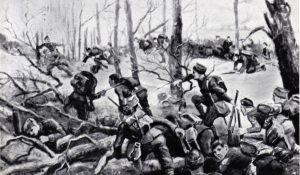 to the Western Front with the rank of lieutenant colonel. During his six months in Belgium, Churchill…who would later lead his country to victory in the World War II and be celebrated as the greatest political leader in British history, saw first-hand the hardships of war and the sacrifices that unknown, unheralded soldiers made for their country. More than once, he himself narrowly escaped death by an enemy shell. As he wrote to Clementine, “Twenty yards more to the left and no more tangles to unravel, no more anxieties to face, no more hatreds and injustices to encountera good ending to a chequered life, a final gift–unvalued–to an ungrateful country.” I find it amazing that a man so capable of “winning” a war, would count it as lost.
to the Western Front with the rank of lieutenant colonel. During his six months in Belgium, Churchill…who would later lead his country to victory in the World War II and be celebrated as the greatest political leader in British history, saw first-hand the hardships of war and the sacrifices that unknown, unheralded soldiers made for their country. More than once, he himself narrowly escaped death by an enemy shell. As he wrote to Clementine, “Twenty yards more to the left and no more tangles to unravel, no more anxieties to face, no more hatreds and injustices to encountera good ending to a chequered life, a final gift–unvalued–to an ungrateful country.” I find it amazing that a man so capable of “winning” a war, would count it as lost.
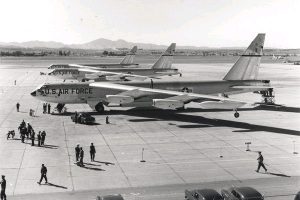 We all look for firsts in things, like first steps, first words, first man in space, first man on the moon, and in this case, the first around the world flight of a jet engine. You would expect that it might be some new jet, designed by an aviation expert, and you would be right, but the flight in question happened on January 16, 1957. The plans were three Boeing B-52 Stratofortresses. This was not just a flight for the purpose of setting a record, but rather it was a flight designed to prove a very important point. The operation was called Operation Power Flite…I’m not sure why flight was spelled flite. The planes made the trip around the world in 45 hours and 19 minutes, using in-flight refueling so that they could stay aloft for the entire journey. The mission was intended to demonstrate that the United States had the ability to drop a hydrogen bomb anywhere in the world. Led by Major General Archie J. Old, Jr. as flight commander, five B-52B aircraft of the 93rd Bombardment Wing of the 15th Air Force took off from Castle Air Force Base in California on January 16, 1957, at 1:00 PM, with two of the planes flying as spares. Old was aboard Lucky Lady III (serial number which was commanded by Lieutenant Colonel James H. Morris, who had flown as the co-pilot aboard the Lucky Lady II when it made the world’s first non-stop circumnavigation in 1949. Heading east, one of the planes was unable to refuel successfully from a Boeing KC-97 Stratofreighter and was forced to land at Goose Bay Air Base in Labrador. The second spare refueled with the rest of the planes over Casablanca, Morocco and then split off as planned to land at RAF Brize Norton in England.
We all look for firsts in things, like first steps, first words, first man in space, first man on the moon, and in this case, the first around the world flight of a jet engine. You would expect that it might be some new jet, designed by an aviation expert, and you would be right, but the flight in question happened on January 16, 1957. The plans were three Boeing B-52 Stratofortresses. This was not just a flight for the purpose of setting a record, but rather it was a flight designed to prove a very important point. The operation was called Operation Power Flite…I’m not sure why flight was spelled flite. The planes made the trip around the world in 45 hours and 19 minutes, using in-flight refueling so that they could stay aloft for the entire journey. The mission was intended to demonstrate that the United States had the ability to drop a hydrogen bomb anywhere in the world. Led by Major General Archie J. Old, Jr. as flight commander, five B-52B aircraft of the 93rd Bombardment Wing of the 15th Air Force took off from Castle Air Force Base in California on January 16, 1957, at 1:00 PM, with two of the planes flying as spares. Old was aboard Lucky Lady III (serial number which was commanded by Lieutenant Colonel James H. Morris, who had flown as the co-pilot aboard the Lucky Lady II when it made the world’s first non-stop circumnavigation in 1949. Heading east, one of the planes was unable to refuel successfully from a Boeing KC-97 Stratofreighter and was forced to land at Goose Bay Air Base in Labrador. The second spare refueled with the rest of the planes over Casablanca, Morocco and then split off as planned to land at RAF Brize Norton in England.
After a mid-air refueling rendezvous over Saudi Arabia, the planes followed the coast of India to Sri Lanka and then made a simulated bombing drop south of the Malay Peninsula before heading towards the next air refueling rendezvous over Manila and Guam. The three planes continued across the Pacific Ocean and landed at March Air Force Base near Riverside, California on January 18 after flying for a total of 45 hours and 19 minutes, with the lead plane landing at 10:19 AM and the other two planes following each other separated by 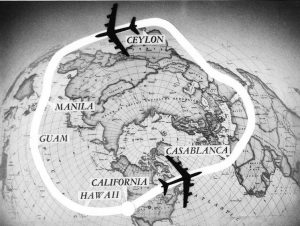 80 seconds. The 24,325 miles flight was completed at an average speed of 525 miles per hour and was completed in less than half the time required by Lucky Lady II when it made the first non-stop circumnavigation in 1949. General Curtis LeMay was among the 1,000 on hand to greet the three planes, and he awarded all 27 crew members the Distinguished Flying Cross. Though Old called the flight “a routine training mission,” the Air Force emphasized that the mission demonstrated its “capability to drop a hydrogen bomb anywhere in the world.” The flight was in reality, a warning to hostile nations, that the United States was capable of dropping a bomb anywhere in the world, and it would be for the best if these nations did not provoke the United States.
80 seconds. The 24,325 miles flight was completed at an average speed of 525 miles per hour and was completed in less than half the time required by Lucky Lady II when it made the first non-stop circumnavigation in 1949. General Curtis LeMay was among the 1,000 on hand to greet the three planes, and he awarded all 27 crew members the Distinguished Flying Cross. Though Old called the flight “a routine training mission,” the Air Force emphasized that the mission demonstrated its “capability to drop a hydrogen bomb anywhere in the world.” The flight was in reality, a warning to hostile nations, that the United States was capable of dropping a bomb anywhere in the world, and it would be for the best if these nations did not provoke the United States.
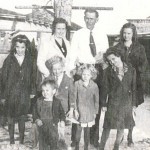 Being the youngest of my grandparents, George and Hattie Byer’s three middle children, might possibly afford my Uncle Wayne Byer a small amount of innocence in the antics the three of them pulled, but if you know Uncle Wayne, you would be hard pressed to buy into that idea, because the three of them, Uncle Larry Byer, the oldest; my mother, Collene Spencer, the middle child; and Uncle Wayne were pretty much equally to blame. I really think they drove my grandmother half crazy. What one didn’t pull, another did. They would defend each other to the end…or until Grandma got a hold of them, then all bets were off.
Being the youngest of my grandparents, George and Hattie Byer’s three middle children, might possibly afford my Uncle Wayne Byer a small amount of innocence in the antics the three of them pulled, but if you know Uncle Wayne, you would be hard pressed to buy into that idea, because the three of them, Uncle Larry Byer, the oldest; my mother, Collene Spencer, the middle child; and Uncle Wayne were pretty much equally to blame. I really think they drove my grandmother half crazy. What one didn’t pull, another did. They would defend each other to the end…or until Grandma got a hold of them, then all bets were off.
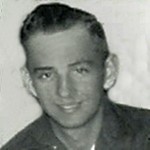
They all three had a great sense of humor, but sometimes I think that Uncle Wayne had the best one…or maybe it was that he just had a way of connecting with the kids in the family. That could easily be it, but he was definitely a big part of the three “partners in crime” that was my mom and her two brothers. I know that all kids can be a trial for parents, but I have a feeling that these three might have really tried my grandmother’s patience, and as if that wasn’t enough, there were six other children in the house too. There was lots of talent, from singing, to dancing, but partners in crime took the cake in the antics department.
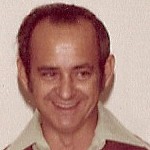 Of course, by the time I met my Uncle Wayne, he was a grown man, who’s oldest son was just two years younger than I was. All the older kids knew about it, but as the younger ones came along, we were always treated to Uncle Wayne’s signature prank…for lack of a better word. He would pop out his dentures, and encourage us to try…which we, of course did, without success. Uncle Wayne’s laugh was infectious. He just had a way of getting all of the kids laughing too. Everyone of the kids loved the uncles. They were really kids at heart…all their lives, and Uncle Wayne, being the only one left has carried on the tradition quite well. He’s a real kick. Today is my Uncle Wayne’s 80th birthday!! Happy birthday Uncle Wayne!! Have a great day!! We love you!!
Of course, by the time I met my Uncle Wayne, he was a grown man, who’s oldest son was just two years younger than I was. All the older kids knew about it, but as the younger ones came along, we were always treated to Uncle Wayne’s signature prank…for lack of a better word. He would pop out his dentures, and encourage us to try…which we, of course did, without success. Uncle Wayne’s laugh was infectious. He just had a way of getting all of the kids laughing too. Everyone of the kids loved the uncles. They were really kids at heart…all their lives, and Uncle Wayne, being the only one left has carried on the tradition quite well. He’s a real kick. Today is my Uncle Wayne’s 80th birthday!! Happy birthday Uncle Wayne!! Have a great day!! We love you!!
 I grew up in Casper, Wyoming in the 70’s. There wasn’t a whole lot for the teen crowd to do, so we all rode “The Strip.” The Strip included all of CY Avenue and part of Center Street and 2nd Street. Most if the kids who had access to a car or knew someone who did, were out on the Strip every Friday and Saturday night. People would show off their “ride,” if they had a cool one, and meet up with their friends. My husband, Bob Schulenberg and I had lots of good friends we hooked up with on the Strip. One of our good friends was Lana Alldredge. Lana had one of those “rides” that was one to show off…a 1970 Mustang Mach 1…Canary Yellow with black stripes. She was so proud of that car. Every night before heading out to ride the Strip, Lana took her car to the carwash for a bath, because she couldn’t stand the thought of her car being dirty when people saw it. Now Lana was out of high school, and so rode the Strip every night, while my parents wouldn’t let me go out on school nights. Nevertheless, lots of kids could go out every night,
I grew up in Casper, Wyoming in the 70’s. There wasn’t a whole lot for the teen crowd to do, so we all rode “The Strip.” The Strip included all of CY Avenue and part of Center Street and 2nd Street. Most if the kids who had access to a car or knew someone who did, were out on the Strip every Friday and Saturday night. People would show off their “ride,” if they had a cool one, and meet up with their friends. My husband, Bob Schulenberg and I had lots of good friends we hooked up with on the Strip. One of our good friends was Lana Alldredge. Lana had one of those “rides” that was one to show off…a 1970 Mustang Mach 1…Canary Yellow with black stripes. She was so proud of that car. Every night before heading out to ride the Strip, Lana took her car to the carwash for a bath, because she couldn’t stand the thought of her car being dirty when people saw it. Now Lana was out of high school, and so rode the Strip every night, while my parents wouldn’t let me go out on school nights. Nevertheless, lots of kids could go out every night, 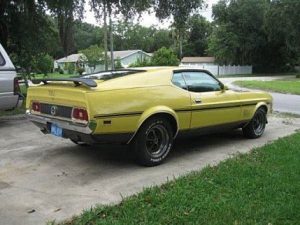 so her car was one that was well known, and had the reputation of always being clean, shiny, and tricked out. If you rode the Strip, you knew Lana’s car.
so her car was one that was well known, and had the reputation of always being clean, shiny, and tricked out. If you rode the Strip, you knew Lana’s car.
I read somewhere that in Minnetonka, Minnesota, there is a law, currently on the books that would work well for Lana, but not so much for most people. According to section 845.110 of Minnetonka, Minnesota’s city laws, there are several situations that are deemed a “public nuisance”, including but certainly not limited to ” a truck or other vehicle whose wheels or tires deposit mud, dirt, sticky substances, litter or other material on any street or highway“. Now, if you ask me, that is extreme. The only way to never have dirty tires is pretty much to bathe your vehicle constantly. While someone like Lana would be ok with that in her Mach 1 years, most people can’t see the point in a daily car bath, just so they didn’t get dirt on the street…in fact, the law is simply, outrageously insane, if you ask me.
 I agree with city beautification, and I can see not wanting the citizens throw shovel loads of dirt or mud onto the city streets, but lets face it…the wind probably deposits more, dirt and litter that the car tires do. Dirty tires, seem more like a relatively unavoidable consequence, rather than considering it a public nuisance, which is defined as something that disturbs peace, safety, and/or general welfare. Dirty tires are a little bit of a stretch here. On the other hand, there really aren’t many things that are less appealing than a dirty truck, especially when it has dirty tires, so maybe this law was founded on some good principles. Still, if this is a law that is still enforced, I don’t think I would want to live in Minnetonka, Minnesota.
I agree with city beautification, and I can see not wanting the citizens throw shovel loads of dirt or mud onto the city streets, but lets face it…the wind probably deposits more, dirt and litter that the car tires do. Dirty tires, seem more like a relatively unavoidable consequence, rather than considering it a public nuisance, which is defined as something that disturbs peace, safety, and/or general welfare. Dirty tires are a little bit of a stretch here. On the other hand, there really aren’t many things that are less appealing than a dirty truck, especially when it has dirty tires, so maybe this law was founded on some good principles. Still, if this is a law that is still enforced, I don’t think I would want to live in Minnetonka, Minnesota.
 January 13, 1982 found Washington DC in the middle of a severe snowstorm. The Washington National Airport was closed due to heavy snowfall…in excess of 6.5 inches. The airport reopened at noon under barely marginal conditions, but decreasing snow. The planes that had been waiting, began the de-icing process, including an Air Florida Boeing 727. The plane had flown into Washington from Miami in the early afternoon and was supposed to return to Fort Lauderdale, Florida, after a short stop. The short layover turned into a much longer one when the airport closed. When it reopened, the plane was de-iced with chemical anti-freeze, but the planes still had difficulty moving away from the gate due to the ice, so when it eventually made it to the airport’s only usable runway, it was forced to wait 45 minutes more for clearance to take off.
January 13, 1982 found Washington DC in the middle of a severe snowstorm. The Washington National Airport was closed due to heavy snowfall…in excess of 6.5 inches. The airport reopened at noon under barely marginal conditions, but decreasing snow. The planes that had been waiting, began the de-icing process, including an Air Florida Boeing 727. The plane had flown into Washington from Miami in the early afternoon and was supposed to return to Fort Lauderdale, Florida, after a short stop. The short layover turned into a much longer one when the airport closed. When it reopened, the plane was de-iced with chemical anti-freeze, but the planes still had difficulty moving away from the gate due to the ice, so when it eventually made it to the airport’s only usable runway, it was forced to wait 45 minutes more for clearance to take off.
Not wanting to further delay the flight, the pilot, Larry Wheaton, did not return to the terminal for more de-icing, and worse, failed to turn on the plane’s own de-icing system. In fact, the pilot and co-pilot actually discussed the situation, and the co-pilot said “It’s a losing battle trying to de-ice these things. It gives you a false sense of security, that’s all it does.” During the delay, however, ice was accumulating on the wings, and 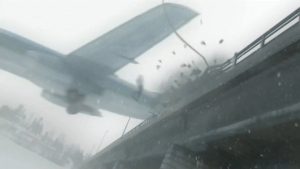 by the time the plane reached the end of the runway, it was able to achieve only a few hundred feet of altitude.
by the time the plane reached the end of the runway, it was able to achieve only a few hundred feet of altitude.
The Air Florida flight took off from Washington National Airport in Arlington, Virginia, with 74 passengers and 5 crew members on board. Thirty seconds later, the plane crashed into the 14th Street Bridge over the Potomac River, less than a mile away from the runway. Seven vehicles traveling on the bridge were struck by the 727 and the plane fell into the freezing water. It was later determined that 73 of the people on board the plane died from the impact, leaving only six survivors in the river. In addition, four motorists, who had been on the bridge, died in the crash. Terrible traffic in Washington that day made it almost impossible for rescue workers to reach the scene. Witnesses didn’t know what to do to assist the survivors who were stuck in the freezing river. Finally, a police helicopter arrived and began assisting the survivors in a very risky operation.
Two people in particular emerged as heroes during the rescue…Arland Williams and Lenny Skutnik. Known as 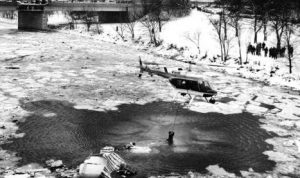 the “sixth passenger,” Williams survived the crash, and passed lifelines on to others rather than take one for himself. He ended up being the only plane passenger to die from drowning. When one of the survivors to whom Williams had passed a lifeline was unable to hold on to it, Skutnik, who was watching the unfolding tragedy, jumped into the water and swam to rescue her. Both Skutnik and Williams, along with bystander Roger Olian, received the Coast Guard Gold Lifesaving Medal. The bridge was later renamed the Arland D. Williams Jr. Memorial Bridge. It was a completely preventable tragedy, and all because they got in a hurry.
the “sixth passenger,” Williams survived the crash, and passed lifelines on to others rather than take one for himself. He ended up being the only plane passenger to die from drowning. When one of the survivors to whom Williams had passed a lifeline was unable to hold on to it, Skutnik, who was watching the unfolding tragedy, jumped into the water and swam to rescue her. Both Skutnik and Williams, along with bystander Roger Olian, received the Coast Guard Gold Lifesaving Medal. The bridge was later renamed the Arland D. Williams Jr. Memorial Bridge. It was a completely preventable tragedy, and all because they got in a hurry.
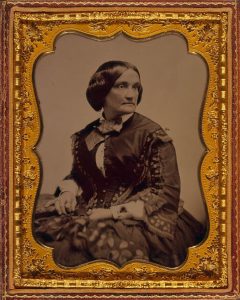 The Ambrotype (from the Ancient Greek words for immortal or impression) or Amphitype, also known as a collodion positive in England, is a positive photograph on glass made by a variant of the wet plate collodion process. Like a print on paper, it is viewed by reflected light. Like the Daguerreotype, which it replaced, and like the prints produced by a Polaroid camera, each is a unique original that could only be duplicated by using a camera to copy it.
The Ambrotype (from the Ancient Greek words for immortal or impression) or Amphitype, also known as a collodion positive in England, is a positive photograph on glass made by a variant of the wet plate collodion process. Like a print on paper, it is viewed by reflected light. Like the Daguerreotype, which it replaced, and like the prints produced by a Polaroid camera, each is a unique original that could only be duplicated by using a camera to copy it.
The Ambrotype was introduced in the 1850s. Then, during the 1860s it was replaced by the tintype, a similar photograph on thin black-lacquered iron, hard to distinguish from an Ambrotype, if under glass. It is quite the process. One side of a clean glass plate was coated with a thin layer of iodized collodion; which is a flammable, syrupy solution of pyroxylin (also known as “nitrocellulose,” “cellulose nitrate,” “flash paper,” and “gun cotton”) in ether and alcohol. The glass is then dipped in a silver nitrate solution. The plate was exposed in the camera while still wet. Exposure times varied from five to sixty seconds or more depending on the brightness of the lighting and the speed of the camera lens. The plate was then developed and fixed. The resulting negative, when viewed by reflected light against a black background, appears to be a positive image: the clear areas look black, and the exposed, opaque areas appear relatively light. This effect was integrated by backing the plate with black velvet; by taking the 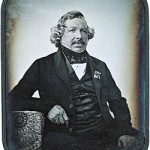 picture on a plate made of dark reddish-colored glass (the result was called a ruby Ambrotype); or by coating one side of the plate with black varnish. Either the emulsion side or the bare side could be coated: if the bare side was blackened, the thickness of the glass added a sense of depth to the image. In either case, another plate of glass was put over the fragile emulsion side to protect it, and the whole was mounted in a metal frame and kept in a protective case. In some instances the protective glass was cemented directly to the emulsion, generally with a balsam resin. This protected the image well but tended to darken it. Ambrotypes were sometimes hand-tinted; untinted ambrotypes are monochrome, gray or tan in their lightest areas.
picture on a plate made of dark reddish-colored glass (the result was called a ruby Ambrotype); or by coating one side of the plate with black varnish. Either the emulsion side or the bare side could be coated: if the bare side was blackened, the thickness of the glass added a sense of depth to the image. In either case, another plate of glass was put over the fragile emulsion side to protect it, and the whole was mounted in a metal frame and kept in a protective case. In some instances the protective glass was cemented directly to the emulsion, generally with a balsam resin. This protected the image well but tended to darken it. Ambrotypes were sometimes hand-tinted; untinted ambrotypes are monochrome, gray or tan in their lightest areas.
The Ambrotype was based on the wet plate collodion process invented by Frederick Scott Archer. Ambrotypes were deliberately underexposed negatives made by that process and optimized for viewing as positives instead. In the United States, ambrotypes first came into use in the early 1850s. In 1854, James Ambrose Cutting of 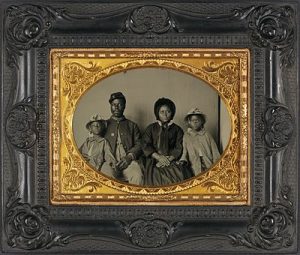 Boston took out several patents relating to the process. He may be responsible for coining the term “Ambrotype.” Ambrotypes were much less expensive to produce than daguerreotypes, the medium that predominated when they were introduced, and did not have the bright mirror-like metallic surface that could make daguerreotypes troublesome to view and which some people disliked. An Ambrotype, however, appeared dull and drab when compared with the brilliance of a well-made and properly viewed daguerreotype. It’s amazing to me that photography could be so complicated…especially when you think that these days, everything is digital, and errors can easily be fixed with Photoshop.
Boston took out several patents relating to the process. He may be responsible for coining the term “Ambrotype.” Ambrotypes were much less expensive to produce than daguerreotypes, the medium that predominated when they were introduced, and did not have the bright mirror-like metallic surface that could make daguerreotypes troublesome to view and which some people disliked. An Ambrotype, however, appeared dull and drab when compared with the brilliance of a well-made and properly viewed daguerreotype. It’s amazing to me that photography could be so complicated…especially when you think that these days, everything is digital, and errors can easily be fixed with Photoshop.

